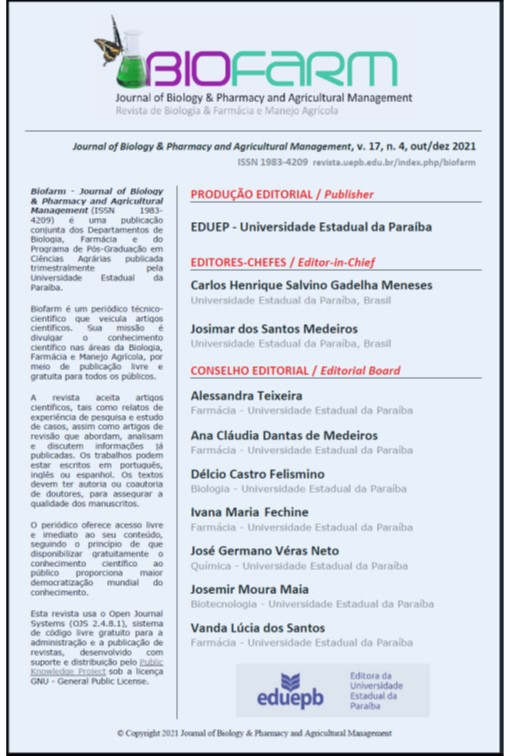A Matricaria recutita (CAMOMILA) NO CONTROLE DA ANSIEDADE:
UMA REVISÃO INTEGRATIVA
Abstract
A ansiedade pode ser definida como um sentimento desagradável de apreensão, tensão, medo, incerteza ou desconforto diante de alguma situação. De outro modo, representa sinal de doença quando a sinalização de alerta permanece acesa ou se apresenta com frequência promovendo mal-estar no indivíduo. O presente estudo objetivou analisar por meio da fitoterapia, o uso da Matricaria recutita (camomila) no controle da ansiedade. A pesquisa foi realizada, em junho de 2021, por meio de uma revisão integrativa da literatura científica acerca do uso da camomila no tratamento da ansiedade. Após a análise, foi possível identificar a camomila como planta medicinal empregada como ansiolítico, porém ensaios clínicos ainda são limitados. Estudos mostraram que os indivíduos que fizeram uso dessa erva apresentaram uma redução significativa nos sintomas da ansiedade em relação ao uso do placebo. Revelou-se que a utilização da camomila não ocasionou reações adversas graves, evidenciando dessa maneira a eficácia da camomila, além de promover confiança e segurança do sujeito ansioso. Conclui-se que a camomila possui importância terapêutica, em especial, por apresentar propriedade ansiolítica, permitindo reduzir os sintomas associados ao permanente estado de alerta típicos da ansiedade. Contudo, novos estudos devem ser realizados acerca da utilização da Matricaria recutita (camomila) em humanos com a finalidade ansiolítica, para que se mantenha atualizado o acervo científico sobre o tema tratado.
Downloads
Published
How to Cite
Issue
Section
License
Copyright (c) 2023 BIOFARM - Journal of Biology & Pharmacy and Agricultural Management

This work is licensed under a Creative Commons Attribution 4.0 International License.
Authors and co-authors retain copyright, but cede the right to first publication to the Journal of Biology & Pharmacy and Agricultural Management (BIOFARM).
Copyright encompasses exclusive rights to reproduce and deliver the article in all form and media, including reprints, photographs, microfilms and any other similar reproductions, as well as translations. The reproduction of any part of this journal, its storage in databases and its transmission by any form or media - such as electronic, electrostatic and mechanical copies, photocopies, recordings, magnetic media, etc. - will be allowed only with a written permission from the BIOFARM.
Articles published in BIOFARM will be Open-Access articles distributed under the terms and conditions of the Creative Commons Attribution License (CC BY). The copyright is retained by the author(s). BIOFARM will insert the following note at the end of the published text:
© 2023 by the authors; licensee BIOFARM, Campina Grande, Brazil. This article is an open access article distributed under the terms and conditions of the Creative Commons Attribution License (http://creativecommons.org/licenses/by/4.0/).


